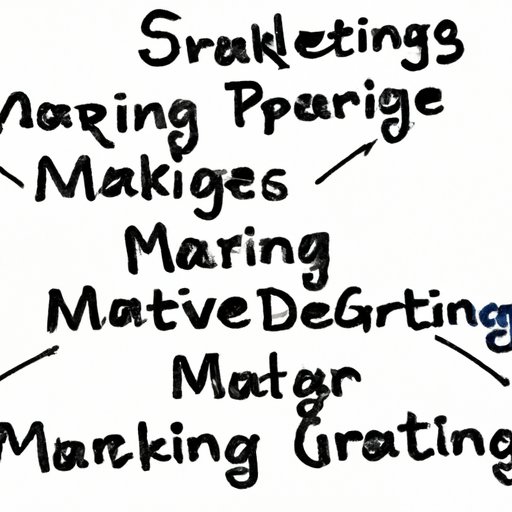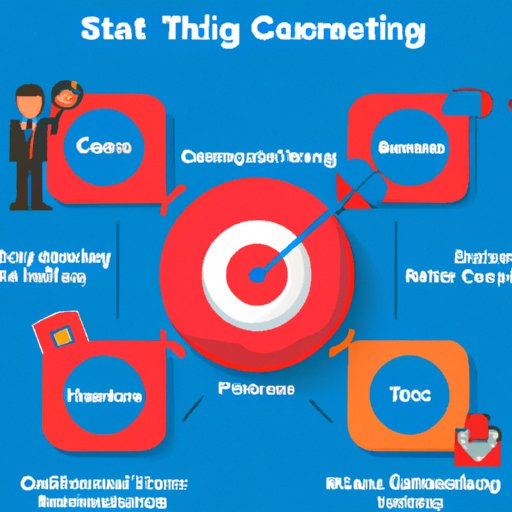Introduction
A marketing strategy is a comprehensive plan that outlines how you will reach and engage potential customers. It should include both long-term and short-term objectives, measurable metrics and tactics for achieving those objectives. A successful marketing strategy helps you identify and target your ideal customers, differentiate yourself from the competition and create a plan for engaging them with meaningful content.

Outlining the Goals of Your Marketing Strategy
The first step in creating a marketing strategy is to outline your goals. You should start by identifying your long-term objectives. These could include anything from increasing brand awareness to driving more sales or generating leads. Once you have identified your long-term goals, you can then work on developing short-term objectives that will help you achieve those goals. For example, if your goal is to increase brand awareness, your short-term objectives could be to increase website traffic or increase social media followers.
Once you have outlined your goals, it is important to establish measurable metrics so that you can track your progress. This could include anything from website visits and conversions to social media engagement and customer satisfaction. Establishing metrics will help you assess the effectiveness of your marketing efforts and make adjustments as needed.
Identifying Your Target Audience
The next step in creating a marketing strategy is to identify your target audience. Understanding the needs and motivations of your target market is key to creating a successful marketing strategy. Start by researching your current and potential customers. Look at things like their demographics, interests and buying habits. This will help you better understand who they are and what they need.
Once you have a good understanding of your target market, you can start segmenting them into smaller groups. Segmenting your target market can help you create more targeted and effective campaigns. You can segment your audience based on things like age, gender, location and interests. By understanding your target market and segmenting them, you can create more personalized and effective campaigns.
Finally, you can leverage data analysis to refine your target market. Data analysis can help you gain deeper insights into your target audience and identify opportunities to better engage them. You can use analytics tools to track customer behavior and find out which channels are most effective for reaching them. This will help you create more targeted campaigns and optimize your marketing efforts.
Researching Your Competition
When creating a marketing strategy, it is also important to research your competition. Evaluating their current strategies can help you identify potential opportunities in the market. Analyze the strengths and weaknesses of their strategies to determine how you can differentiate yourself from them. This can help you create a more effective marketing strategy that sets you apart from your competitors.
You should also look at the types of products and services they are offering and how they are positioning them. This will help you identify gaps in the market that you can capitalize on. By researching your competition and understanding their strategies, you can create a marketing strategy that stands out from the crowd.
Determining Your Unique Selling Proposition (USP)
Your unique selling proposition (USP) is one of the most important elements of your marketing strategy. It is what sets you apart from your competition and makes you stand out in the market. To create an effective USP, you need to understand what sets you apart from your competition. What makes your product or service different? What do you offer that your competitors don’t?
Once you have identified your USP, you need to create a unique value proposition that speaks to your target audience. Craft an effective messaging strategy that communicates your USP clearly and concisely. Your messaging should be tailored to your target audience and focus on the benefits of your product or service.
Developing a Content Marketing Plan
Content marketing is an essential part of any successful marketing strategy. It helps you engage your target audience and build relationships with them. When creating a content marketing plan, you need to choose the right channels for delivering your content. This could include anything from blogs, videos and podcasts to social media, email and digital advertising. You also need to create engaging content that resonates with your target audience.
To ensure your content is seen by the right people, you need to optimize it for search engine visibility. This includes using relevant keywords and optimizing your content for mobile devices. Finally, you need to measure the success of your content strategy. Track metrics such as website visits, conversions, engagement and customer satisfaction to see how your content is performing.
Conclusion
Creating a successful marketing strategy requires careful planning and research. Start by outlining your goals and establishing measurable metrics. Then identify your target audience, research your competition and develop a unique selling proposition. Finally, create a content marketing plan that focuses on delivering engaging content to your target market. By following these steps, you can create an effective marketing strategy that will help you reach and engage your target audience.
(Note: Is this article not meeting your expectations? Do you have knowledge or insights to share? Unlock new opportunities and expand your reach by joining our authors team. Click Registration to join us and share your expertise with our readers.)
